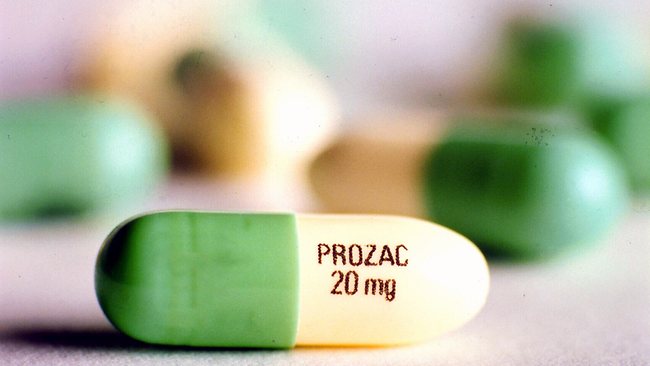
Brian Dillon on the cultural history of Prozac
What did a lost boy like me know about Prozac? Even two decades ago, the drug had been everywhere for years, though I didn’t know a soul who was actually on it. To appreciate how ubiquitous the image and idea of Prozac were by the middle of the decade, just google the magazine, book and newspaper covers – they appear scattered with green-and-white capsules which have sometimes artfully split in two and spilled their powder. There is scarcely a more 90s visual cue or cliché; it was already on the cover of New York magazine in December 1989: ‘Bye-Bye Blues: A New Wonder Drug for Depression’. Consider Newsweek in March 1990: above a desert landscape, a huge capsule floats among clouds like a benign UFO, bearing towards mankind its cargo of placid cheer. I had read the UK equivalents of these articles: Sunday-supplement profiles in which Prozac was treated like a celebrity, and the celebrities taking it were just incidental players. Journalists spoke of the neurotransmitter serotonin, on which the drug was said to act, as if the stuff had been staring science and society in the face all along. (Prozac was, is, one of several selective serotonin reuptake inhibitors, or SSRIs. Serotonin is known to be involved in regulating digestion, appetite, sleep, mood and cognition; but the precise biological effect on mood disorders of altering its action or its levels is still quite unknown.) Everybody now spoke as though at last, after decades of shock therapy, debilitating or addicting drug treatment and a stigma that psychoanalysis had done little to dispel, the late twentieth century had simply discovered a cure for depression.
We learned, my generation, to accept and then righteously defend the idea that depression derived from a ‘chemical imbalance’. This seemed like good news for the depressed: a group that would at some point include, we were informed, fully one tenth of the population. What we had not been told was the prehistory of Prozac, which complicates the dominant story at the height of 90s boosterism. The drug, fluoxetine, was developed around 1970 as a treatment for obesity and high blood pressure, but it did little or nothing for either. It did, however, seem to have an effect at the anxious end of moderate depression, and so eventually it was repurposed as an antidepressant and branded as Prozac. Interbrand, the company tasked with giving the drug its public name and face, had previously worked for Sony, Microsoft, Nikon and Nintendo. Its launch in 1987 had demanded (the magazine stories never said) some redefinition of depression itself. Prozac did not work at the catatonic extreme of bone-deep and often lethal melancholia, and so in the process of its preparation for the market a milder category, ‘atypical depression’, was emphasized in the literature directed at clinicians. Malaise, anxiety, lassitude, fatigue, a generalized lack of ambition and verve – these too were symptoms of depression, and in fact might point to the illness quite as reliably as despair, withdrawal and a desire to die.
Media stories about Prozac tended to focus on those patients who hadn’t thought they were depressed, whose vague sense of disquiet or disappointment had so far passed as glum normality. Some blurring at the edges of the definition of depression meant legions of the high-functioning unhappy could benefit from the new drugs. This was the import of Peter D. Kramer’s Listening to Prozac, published in 1993: the drugs could make you better than well. Kramer’s book was the source for some of the feeling that the new wave of antidepressants might turn us into other people, people whom we might not want to be. This was the crude set of questions now posed: if Prozac and the other SSRIs did away with ordinary unease, what was left of you per se? What else might evanesce along with sadness? Realism? Profundity? Scepticism? Irony? The milder, more productive kinds of melancholy? The very need to think or write or make art? Added to all of this before long were reports of suicides among patients on Prozac. And a feeling that even if the media-conjured extremes – psychic cure-all versus thalidomide-scale disaster – were false, there was something not exactly sane about the spread of a Prozac culture.
(…)

